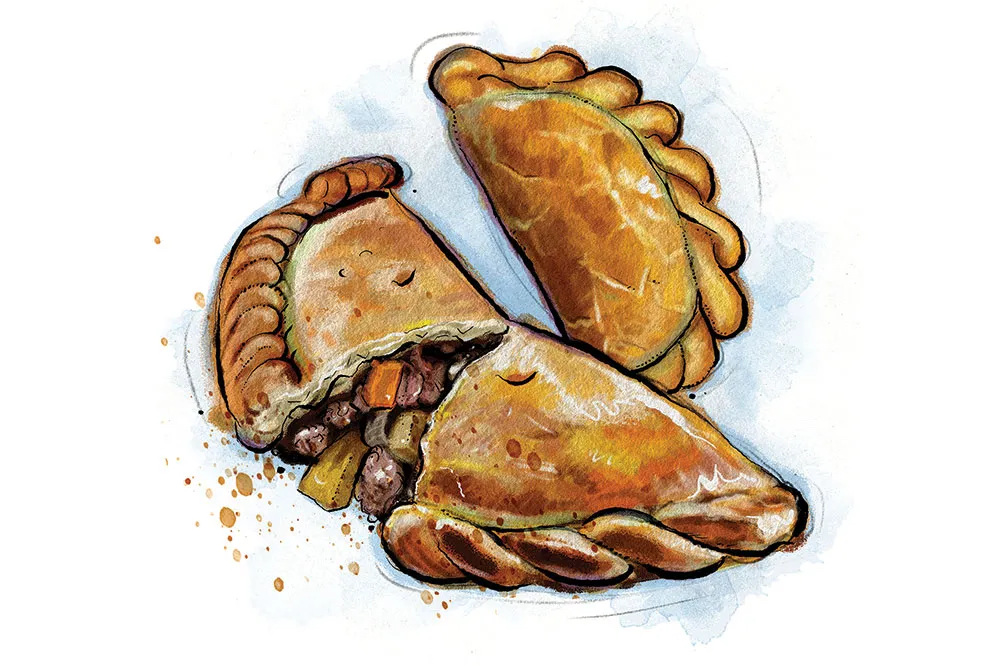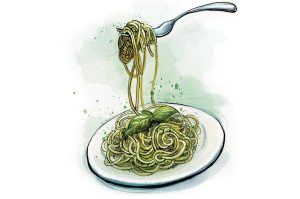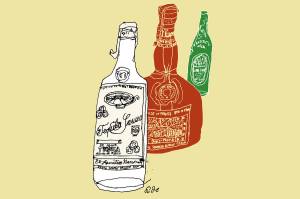When it comes to traditional British food, there is always regional pride to contend with. Many recipes are intrinsically connected to the area from which they have sprung: Pontefract cakes, Chelsea buns, Lancashire hotpot, Welsh rarebit. They represent heritage and tradition — edible history. You must tread carefully to avoid offending regional heritage or just making silly mistakes. I certainly feel on safer ground making pronouncements from my Salford home on Eccles cakes than I do on Ecclefechan tart.
But when it comes to the Cornish pasty, the people of Cornwall have taken ownership a step further. In 2011, the Cornish pasty was granted Protected Geographical Indication by the European Union, which dictates where — and how — a true classic Cornish pasty can be made. This is the same protection enjoyed by products like champagne, Parma ham and Comté cheese.
They are filling, nutritious and economical. Essentially they are their own packaging
It wasn’t easy for the Cornish to gain this geographical protection — it was a nine-year process — but it’s understandable that they felt it worthwhile. Cornish pasties are thought to represent 20 percent of the region’s food and drink turnover, with more than 100 million consumed per year, a truly mind-boggling number. Today, following Brexit, things are slightly different: the UK has brought in its own Protected Geographic Origin scheme. But the principle is the same: the status guarantees a product’s characteristics or reputation, authenticity and origin, although only within the UK.
In the pasty’s earliest days, there was nothing intrinsically Cornish about it. Pasties were commonplace across the UK in the Middle Ages, with every region having its own variety. They make sense: a handheld pie made from cheap ingredients, they are filling, nutritious and economical. Essentially they are their own packaging and can be slipped into a pocket at the beginning of the day. They were particularly popular with those working long, hard days, such as miners and farmers.
This led to the most distinctive feature of the Cornish pasty: the pasties of Cornwall are crimped on their side, and sit flat, as opposed to being crimped along the top and sitting perkily upright. This meant that miners whose hands were covered in tin or copper dust, in environments where arsenic levels were high, could use the crimped edge as a handle and then discard it. Supposedly, this pleased the “knockers,” the spirits which lived in the mines.
How to make a Cornish pasty correctly? First, it must be filled with potato, swede, onion and diced — never minced — beef. The proportions of these components are codified: no less than 25 percent vegetable content and 15 percent meat content. The filling must be uncooked when it meets the pastry. No other substantive fillings are permitted, but you can add small amounts of other ingredients to aid “succulence and flavor.” I keep it simple (and tread carefully) with a little butter, some salt and lots of black pepper.
The pastry itself must be “golden” and “robust” and should be “D”-shaped. Beyond that, there is uncharacteristic leeway. The pastry can be shortcrust, rough puff, or classic puff. I favor a 50/50 butter and lard crust which creates a crisp, short pastry that can be easily handled. A slow bake is required to allow the constituents to retain “discernible” texture and taste, but also attain a fusion of flavor. Thankfully, cooking the fillings from raw, encased in this sturdy, tightly crimped pastry, does most of the work for you.
Even if you subscribe to all of these requirements, the whole thing must be assembled in Cornwall in order to call it a Cornish pasty (although not necessarily baked there). Which means that if you’re baking this in your kitchen at home, unless you’re lucky enough to live in Cornwall, your pasty can’t truly be a Cornish pasty. We’ll have to settle for a Corn-ish pasty.
Takes Thirty mins, plus chilling
Makes Five
Bakes One hour
For the pastry
- 4 cups strong white bread flour
- 1 tsp salt
- 1 cup chilled lard
- 1 cup chilled butter
- 2/3 cup cold water
For the filling
- 1 3/4 cup diced beef
- 1 1/4 cup waxy potatoes
- 1 cup rutabaga
- 2 onions
- 1/3 cup butter
- 1 egg, beaten
- Salt and pepper
- First, make the pastry. Place the flour and salt in a large bowl, coarsely grate the butter and lard into it, and give it all a good stir. Add the water bit by bit — you may not need it all — until the ingredients come together into a dough. Wrap in saran wrap and refrigerate for at least two hours
- Peel and evenly dice the veg, about half an inch across. Chop the beef into similarly small pieces
- Roll the chilled pastry on a lightly floured surface, not too thin, and cut out five nine inch rounds (I cut around a plate). Pile the filling up in the center of the rounds, first the onion, next the potato and rutabaga, then the beef. Season with salt and pepper, and dot with a little butter
- Preheat the oven to 400°F. Paint the edge of the circle with egg wash. Fold the pastry over the filling to meet the other edge, gently cupping your hand over the filled section to expel any air and neaten the hump. Crimp the join by pushing down on the pastry edge with your finger, then twisting the next section, rolling it back on itself. Continue along the entire edge
- Paint the top of the pastry with egg wash. Make two vents in the center of each pasty. Transfer to a lined tray, bake for ten minutes, then lower the oven temperature to 320°F and cook for another forty-five minutes. Enjoy hot
This article was originally published in The Spectator’s UK magazine. Subscribe to the World edition here.





















